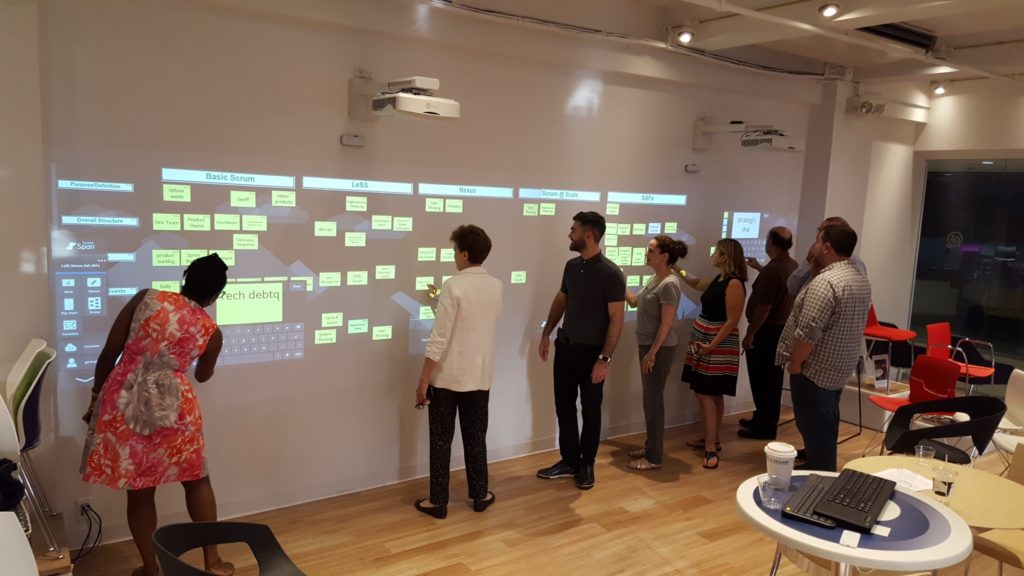This event was about comparing and contrasting the following four known scaled agile frameworks:
- For LeSS (Craig Larman’s and Bas Vodde’s)
- For Nexus (Ken Schwaber’s)
- For Scrum @ Scale (Jeff Sutherland’s)
- For SAFe (Dean Leffingwell’s)
The discussion was very engaging but conclusive and many topics remained to-be-discussed in a future.
Below, please find the post by one of the participants and contributors at the meetup: Sevina Sultanova:
 Scaled Agile comes in different flavors. Knowing the differences and similarities between various Agile frameworks can be largely beneficial, to put organizations at ease BEFORE they get underway with Agile Transformation, while with either of the frameworks: LeSS, Nexus, Scrum @ Scale, and SAFe.
Scaled Agile comes in different flavors. Knowing the differences and similarities between various Agile frameworks can be largely beneficial, to put organizations at ease BEFORE they get underway with Agile Transformation, while with either of the frameworks: LeSS, Nexus, Scrum @ Scale, and SAFe.
Consider the recent LeSS in NYC meetup event in which attendees gathered around the virtual canvas projected onto the wall with goal of creating a perspective about the frameworks and comparing/contrasting them across multiple Agile dimensions (e.g., dependencies, optimization, overall structure, artifacts, ceremonies/events, teaming, ability to improve system design, roles/responsibilities, strengths, challenges, etc.).
The participants were provided with a lightweight reference for each framework in the form of virtual stickies to “move” around across the table, in order to understand the differences of the various scaling frameworks.
What I found particularly interesting was a discussion about the differences between SAFe and LeSS initiated by one of the attendees. Here are a few highlights from this discussion:
|
Topics |
SAFe |
LeSS |
| Solving dependencies | Coordinates people | People work with technology |
| Cost of dependencies | Coordination is seemingly necessary waste | Learning to work with technology is investment |
| Optimization | Resource coordination | Outcome optimization |
| Batch size | [1] Planning cycle 3 months. Big batch of work to reduce total cost. | [1] Planning. Sprint-long iterations to enable fast feedback |
| Main control mechanism | [2] Bureaucratic | [2] Clan |
| Customer contact | Intermediated | Direct |
| Organizational maturity | Possible with lower skill. Learning for the role “Natural” Development | Higher skill needed. Learning what is needed. Skilled evolution, leading learning |
Take away: Embracing either framework is simple yet not easy as technology, competence, identities and culture need to develop.
As Edgar H. Schein says, “There will always be learning anxiety…Learning only happens when survival anxiety is greater than learning anxiety.” [3] Like with any enduring change, learning requires time though there is sure to be some worry and resistance.
References:
- [1] Stefan Thomke and Donald Reinertsen, Six myths of Product Development,” Harvard Business Review. May, 2012.
- [2] William G. Ouchi. A Conceptual Framework for the Design of Organizational Control Mechanisms. Management Science, Vol. 25, No. 9. (Sep., 1979), pp. 833-848.
- [3] Edgar H. Schein, The Anxiety of Learning,” Harvard Business Review. March, 2002.
If you have any questions for Sevina, please contact her directly here

